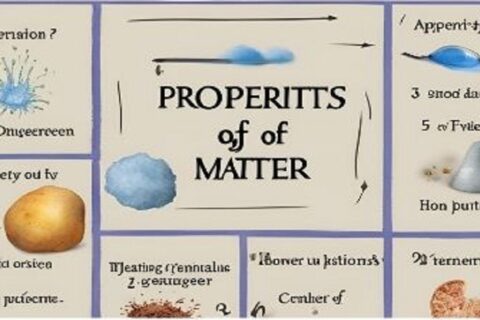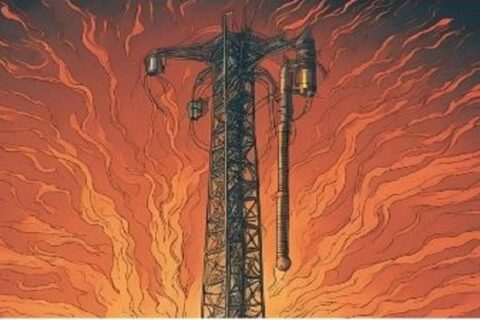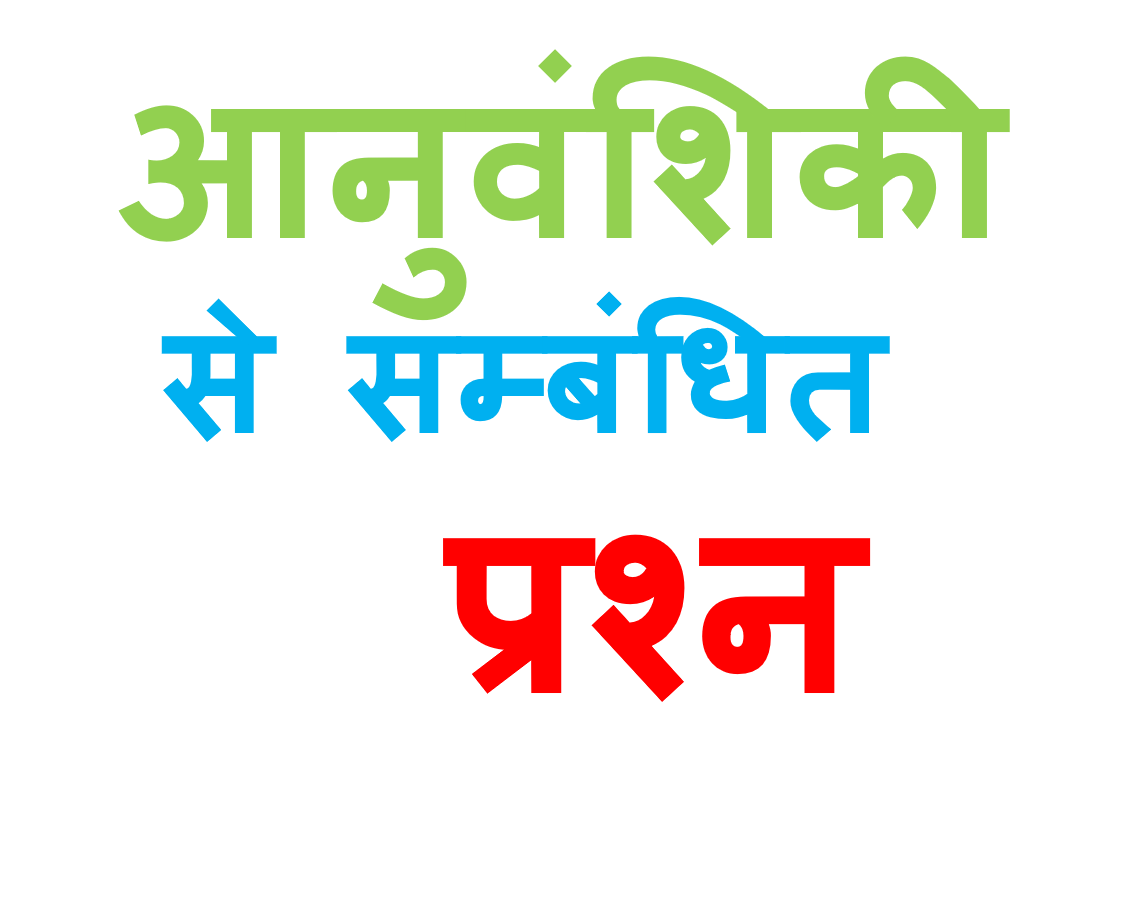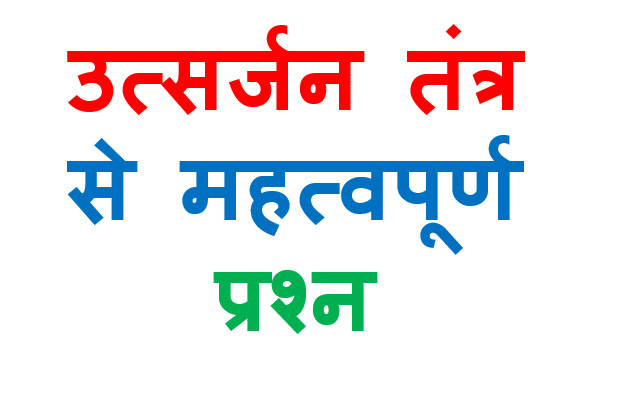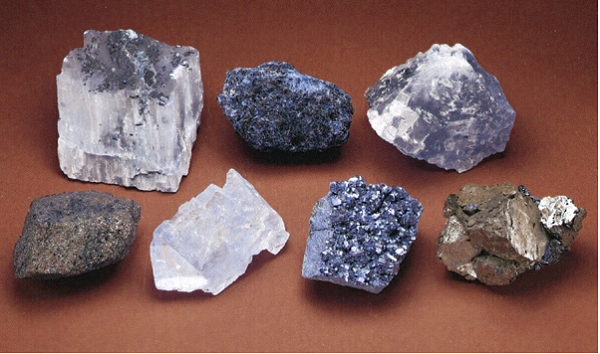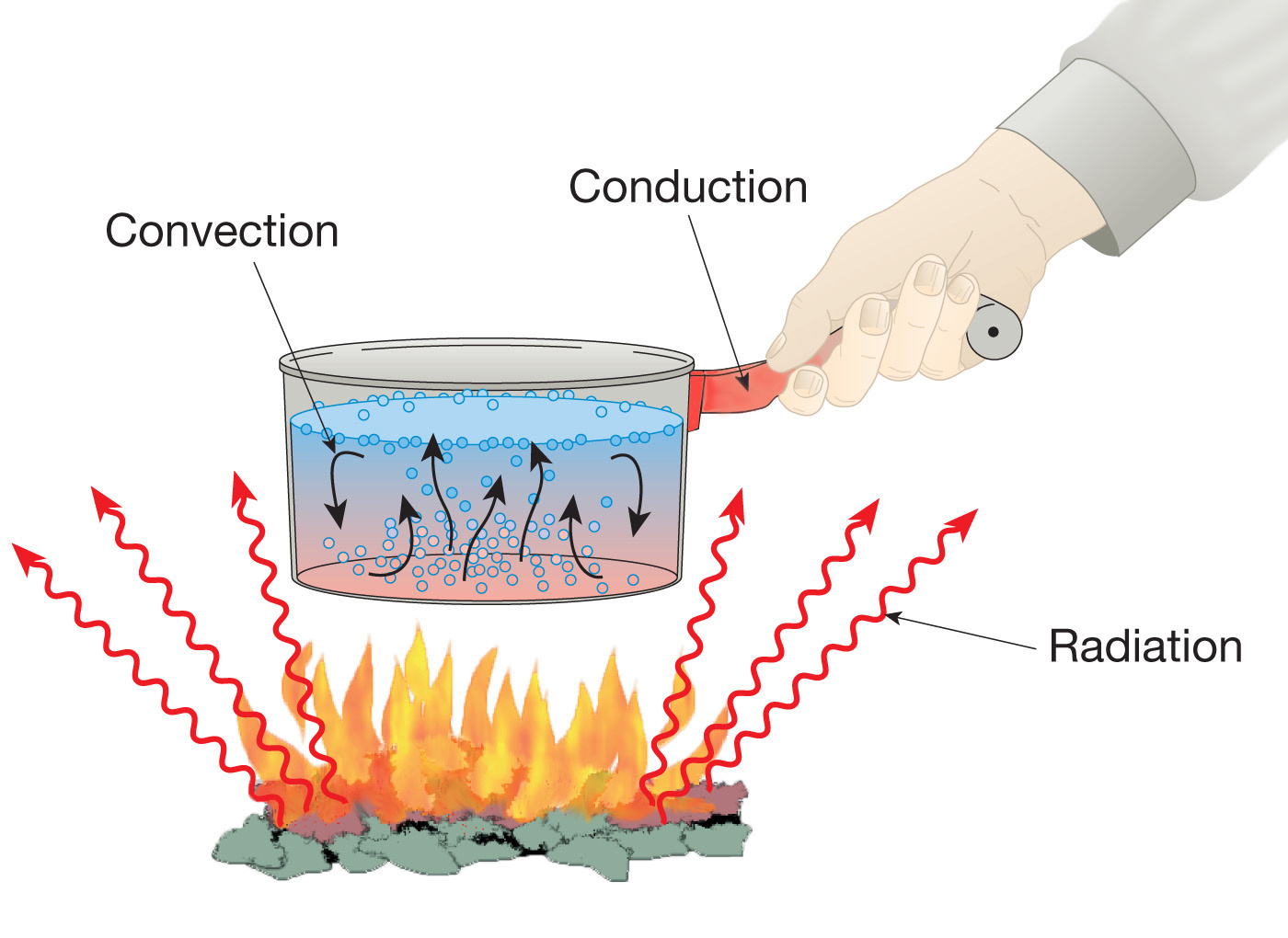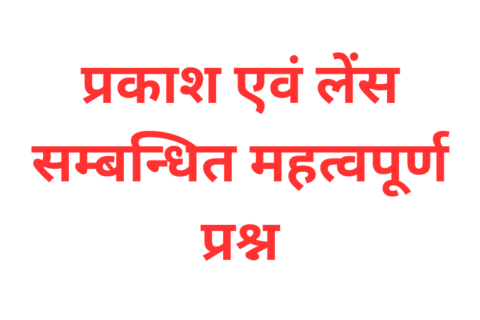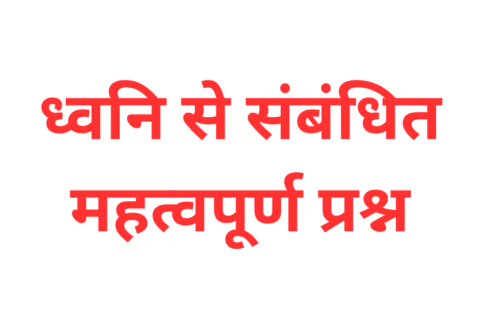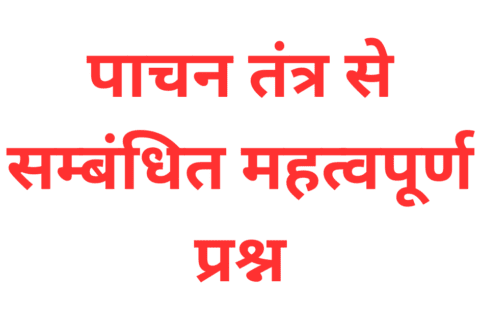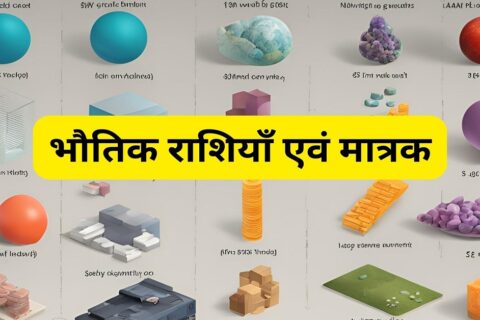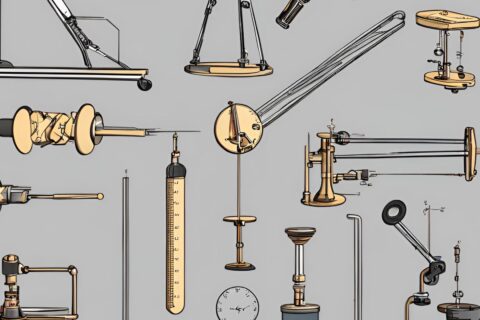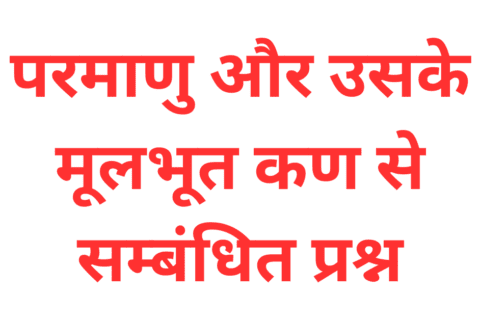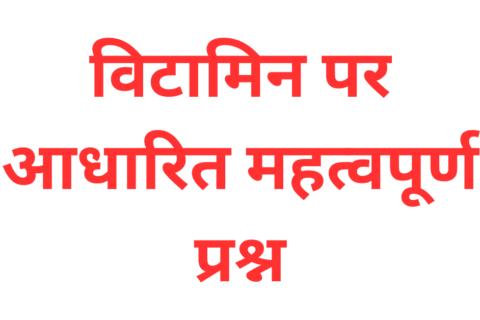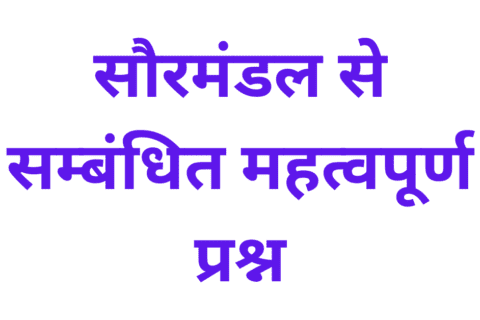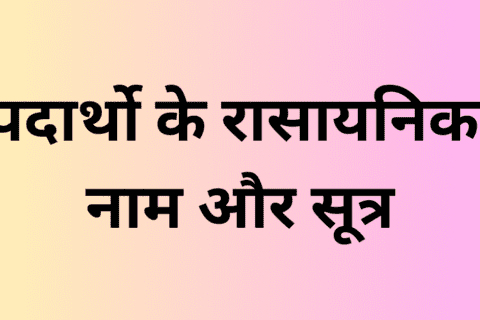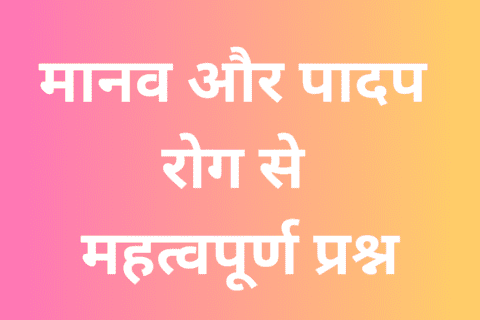Magnetic field mcq in hindi with answers 2024
चुम्बकत्व क्विज 2
Congratulations – you have completed चुम्बकत्व क्विज 2.
You scored %%SCORE%% out of %%TOTAL%%.
Your performance has been rated as %%RATING%%
Your answers are highlighted below.
Question 1
एक स्वतंत्र रूप से लटका हुआ चुम्बक सदैव ठहरता है –
A freely hanging magnet always remains –
A दक्षिण-पश्चिम दिशा में /Southwest direction B उतर-पूर्व दिशा में /
Northeast C उतर-दक्षिण दिशा में /
North-south direction D उतर-पश्चिम दिशा में /
Northwest direction
Question 2
स्टील को चुम्बकीय कारण कठिन है,क्योकि –
A कम चुम्बकशील होने के कारण B अधिक धारण क्षमता होने के कारण C अधिक घनत्व होने के कारण D अधिक चुम्बकशील होने के कारण
Question 3
निम्नलिखित में से कोनसा एक अनुचुम्बकीय है –
Which one of the following is Paramagnetic –
A हाइड्रोजन / Hydrozen B लोहा / Iron C ओक्सीजन / Oxygen D नाइट्रोजन /
Nitrogen
Question 4
यदि एक चुम्बक को दो भागो में विभक्त कर दिया जाये तो –
If a magnet is divided into two parts –
A दोनो भाग पृथक-पृथक चुम्बक बन जाते है (Both parts become separate magnets) B एक भाग चुम्बक तथा दूसरा भाग अचुम्बक बन जाता है (One part becomes magnet and the other part becomes magnet) C दोनों भाग अचुम्बकीय बन जाते है (Both parts become non-magnetic) D एक भाग उतरी ध्रुव तथा दूसरा भाग दक्षिण ध्रुव बन जाता है (One part becomes North Pole and other part becomes South Pole.)
Question 5
चुम्बकीय क्षेत्र में गतिमान निम्नलिखित में से कोन विक्षेपित नही हो सकता है ?
Which one of the following cannot be deflected by moving in the magnetic field?
A प्रोटोन (Proton) B अल्फ़ा कण (Alpha particle) C कैथोड किरणें (Cathode rays) D न्युट्रोन (Neutrons)
Question 6
किसी चुम्बक की आकर्षण शक्ति सबसे कम कहाँ होती है ?
A दोनों किनारों पर B मध्य में C चुम्बकीय अक्ष पर D सभी जगह पर सामान होता है
Question 7
निम्न में से कोनसा कथन असत्य है ?
A चुम्बक के सामान ध्रुवो के बीच प्रतिकर्षण होता है B चुम्बक के असामान ध्रुवो के बीच आकर्षण होता है C एक विलग ध्रुव का कोई अस्तित्व नही होता है D किसी चुम्बक को बीच से तोड़ देने पर इसके दोनों ध्रुव अलग-अलग हो जाते है
Question 8
ध्रुवो पर नमन कोण का मान कितना होता है ?
What is the value of damping angle at the pole?
A 0 डीग्री / 0 degree B 45 डीग्री / 45degree C 60 डीग्री / 60 degree D 90 डीग्री /90 degree
Question 9
विधुत मोटर निम्नलिखित में से किस सिद्धांत पर कार्य करती है –
Which of the following principles of electric motor works on –
A ओम का नियम /rules of OM B फैराडे का नियम /
Faraday’s law C लेन्ज का नियम /
Law of lenj D फ्लेमिंग का नियम /
Flaming’s law
Question 9 Explanation: विधुत मोटर विधुत ऊर्जा को यांत्रिक ऊर्जा में परिवर्तित करती है
Once you are finished, click the button below. Any items you have not completed will be marked incorrect.
Get Results
There are 9 questions to complete.
You have completed
questions
question
Your score is
Correct
Wrong
Partial-Credit
You have not finished your quiz. If you leave this page, your progress will be lost.
Correct Answer
You Selected
Not Attempted
Final Score on Quiz
Attempted Questions Correct
Attempted Questions Wrong
Questions Not Attempted
Total Questions on Quiz
Question Details
Results
Date
Score
Hint
Time allowed
minutes
seconds
Time used
Answer Choice(s) Selected
Question Text
All doneNeed more practice!Keep trying!Not bad!Good work!Perfect!
चुम्बकत्व क्विज 2
Congratulations – you have completed चुम्बकत्व क्विज 2.
You scored %%SCORE%% out of %%TOTAL%%.
Your performance has been rated as %%RATING%%
Your answers are highlighted below.
Question 1 |
एक स्वतंत्र रूप से लटका हुआ चुम्बक सदैव ठहरता है –
A freely hanging magnet always remains –
A | दक्षिण-पश्चिम दिशा में /Southwest direction |
B | उतर-पूर्व दिशा में /
Northeast |
C | उतर-दक्षिण दिशा में /
North-south direction |
D | उतर-पश्चिम दिशा में /
Northwest direction |
Question 2 |
स्टील को चुम्बकीय कारण कठिन है,क्योकि –
A | कम चुम्बकशील होने के कारण |
B | अधिक धारण क्षमता होने के कारण |
C | अधिक घनत्व होने के कारण |
D | अधिक चुम्बकशील होने के कारण |
Question 3 |
निम्नलिखित में से कोनसा एक अनुचुम्बकीय है –
Which one of the following is Paramagnetic –
A | हाइड्रोजन / Hydrozen |
B | लोहा / Iron |
C | ओक्सीजन / Oxygen |
D | नाइट्रोजन /
Nitrogen |
Question 4 |
यदि एक चुम्बक को दो भागो में विभक्त कर दिया जाये तो –
If a magnet is divided into two parts –
A | दोनो भाग पृथक-पृथक चुम्बक बन जाते है (Both parts become separate magnets) |
B | एक भाग चुम्बक तथा दूसरा भाग अचुम्बक बन जाता है (One part becomes magnet and the other part becomes magnet) |
C | दोनों भाग अचुम्बकीय बन जाते है (Both parts become non-magnetic) |
D | एक भाग उतरी ध्रुव तथा दूसरा भाग दक्षिण ध्रुव बन जाता है (One part becomes North Pole and other part becomes South Pole.) |
Question 5 |
चुम्बकीय क्षेत्र में गतिमान निम्नलिखित में से कोन विक्षेपित नही हो सकता है ?
Which one of the following cannot be deflected by moving in the magnetic field?
A | प्रोटोन (Proton) |
B | अल्फ़ा कण (Alpha particle) |
C | कैथोड किरणें (Cathode rays) |
D | न्युट्रोन (Neutrons) |
Question 6 |
किसी चुम्बक की आकर्षण शक्ति सबसे कम कहाँ होती है ?
A | दोनों किनारों पर |
B | मध्य में |
C | चुम्बकीय अक्ष पर |
D | सभी जगह पर सामान होता है |
Question 7 |
निम्न में से कोनसा कथन असत्य है ?
A | चुम्बक के सामान ध्रुवो के बीच प्रतिकर्षण होता है |
B | चुम्बक के असामान ध्रुवो के बीच आकर्षण होता है |
C | एक विलग ध्रुव का कोई अस्तित्व नही होता है |
D | किसी चुम्बक को बीच से तोड़ देने पर इसके दोनों ध्रुव अलग-अलग हो जाते है |
Question 8 |
ध्रुवो पर नमन कोण का मान कितना होता है ?
What is the value of damping angle at the pole?
A | 0 डीग्री / 0 degree |
B | 45 डीग्री / 45degree |
C | 60 डीग्री / 60 degree |
D | 90 डीग्री /90 degree |
Question 9 |
विधुत मोटर निम्नलिखित में से किस सिद्धांत पर कार्य करती है –
Which of the following principles of electric motor works on –
A | ओम का नियम /rules of OM |
B | फैराडे का नियम /
Faraday’s law |
C | लेन्ज का नियम /
Law of lenj |
D | फ्लेमिंग का नियम /
Flaming’s law |
Question 9 Explanation:
विधुत मोटर विधुत ऊर्जा को यांत्रिक ऊर्जा में परिवर्तित करती है
Once you are finished, click the button below. Any items you have not completed will be marked incorrect.
Get Results
There are 9 questions to complete.
You have completed
questions
question
Your score is
Correct
Wrong
Partial-Credit
You have not finished your quiz. If you leave this page, your progress will be lost.
Correct Answer
You Selected
Not Attempted
Final Score on Quiz
Attempted Questions Correct
Attempted Questions Wrong
Questions Not Attempted
Total Questions on Quiz
Question Details
Results
Date
Score
Hint
Time allowed
minutes
seconds
Time used
Answer Choice(s) Selected
Question Text
All done
Need more practice!
Keep trying!
Not bad!
Good work!
Perfect!



